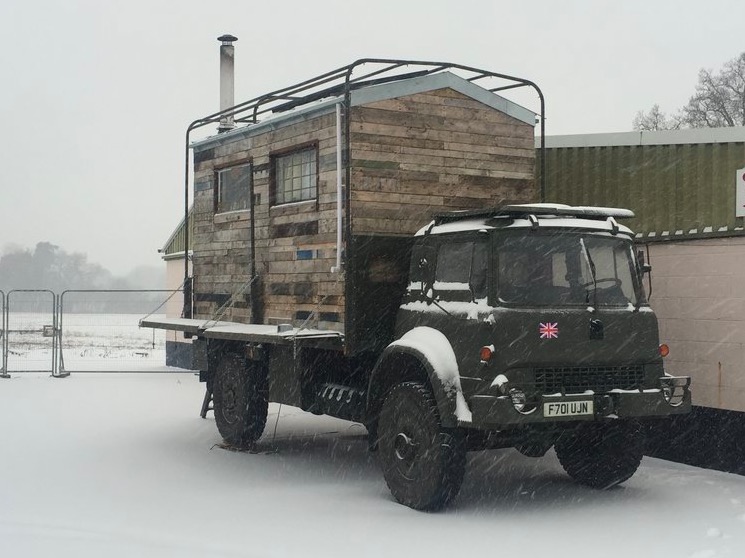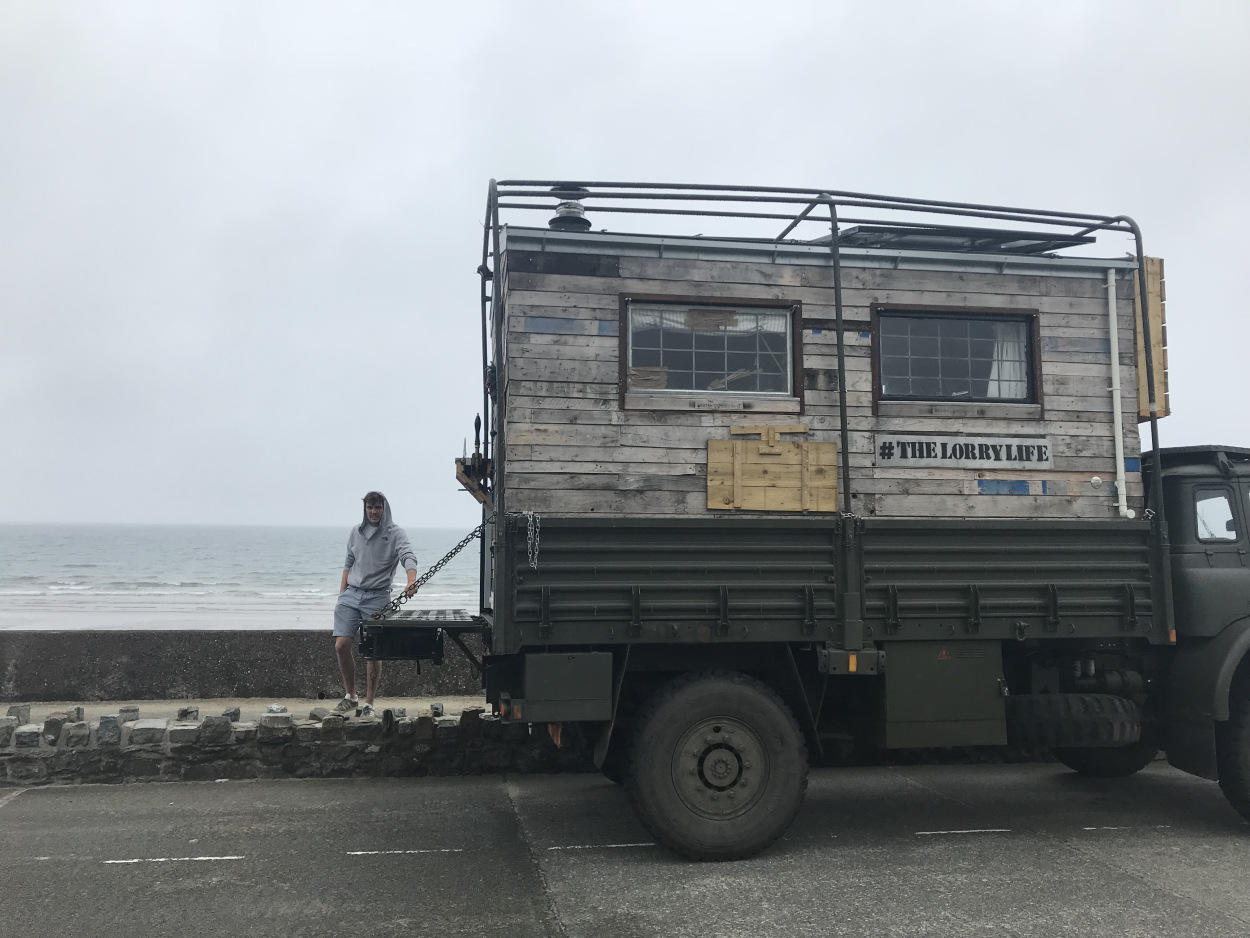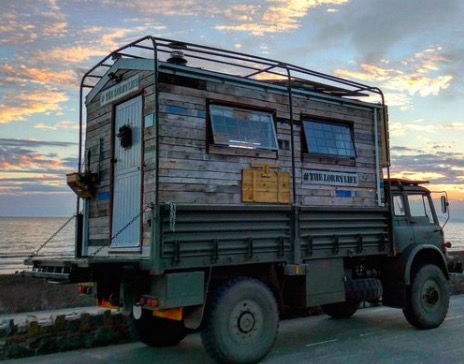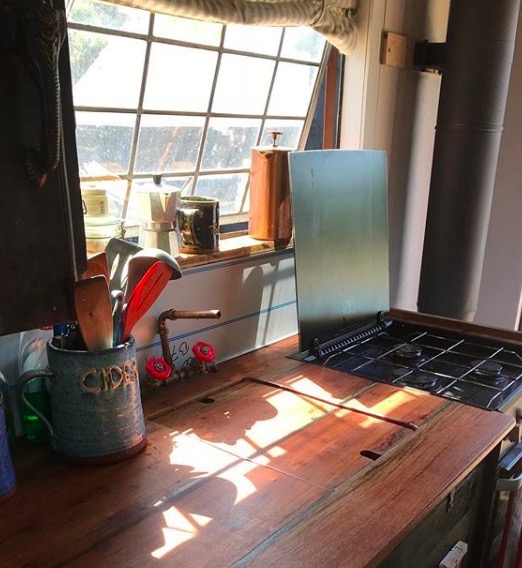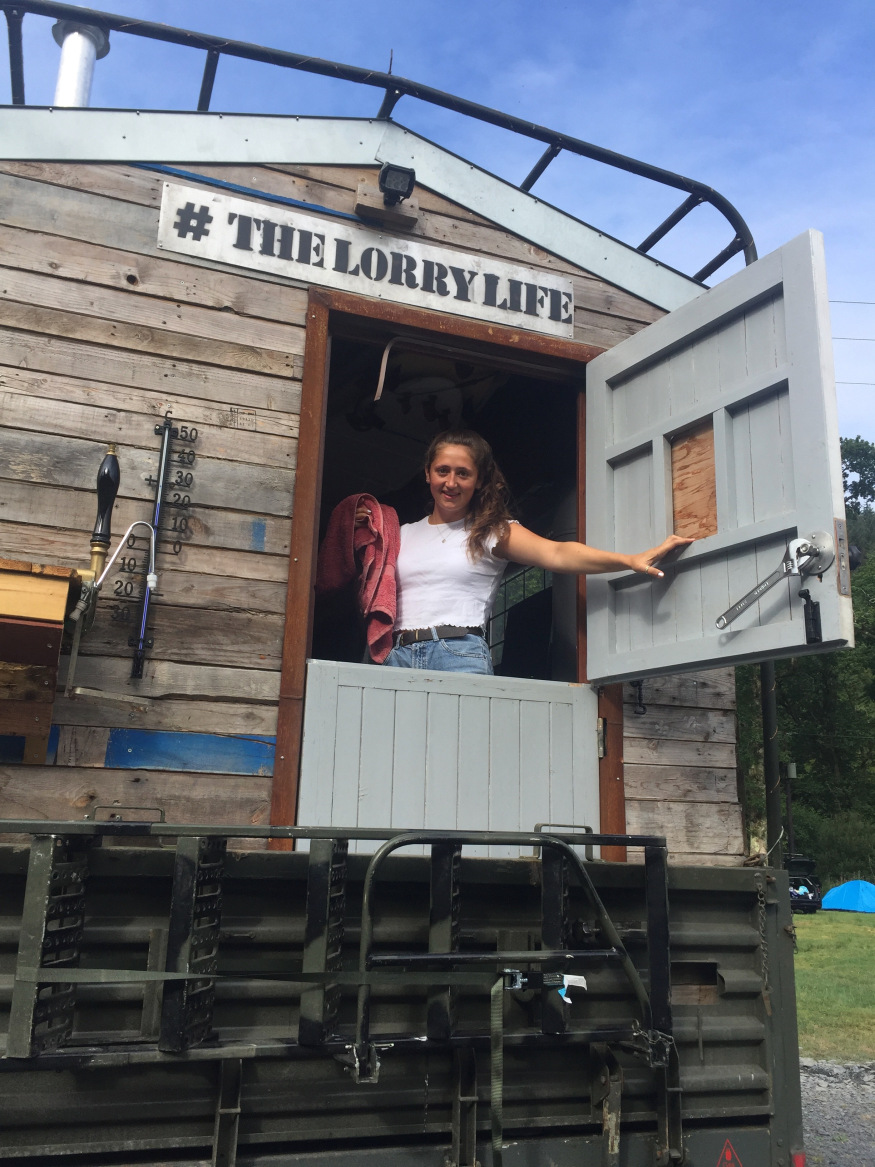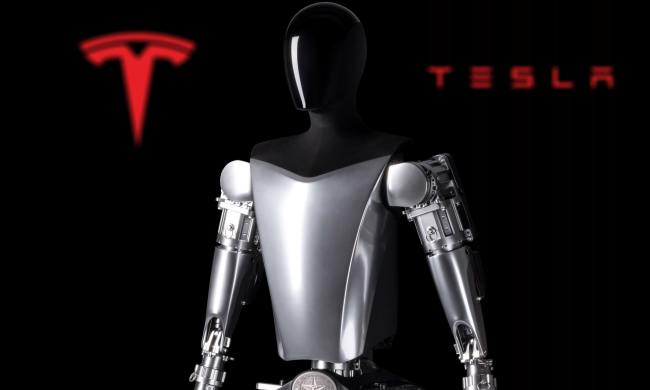Most tiny homes are the result of infinite optimization and efficiency paired with futuristic smart home technology. This is not that story.
This is the story of a tiny home that could only be built by a dude with a dream, an old Army truck, and a dangerous number of metal working tools.
Last week, we ran across a news story about an ongoing blog called “The Lorry Life,” and the story it tells is kind of amazing. It describes how Tom and Sophie, a British couple, have been traveling around Europe in a 72-square-foot tiny home housed in a 1982 Bedford MJ former British Army truck (a lorry, in British parlance).
Tom is a metal worker whose day job was restoring vintage cars. His long-term dream is to set up a business to help other people build tiny homes and mobile campers as well as to promote off-grid living and homeless solutions through charity.
It’s not like we haven’t seen mobile tiny homes before, from this school bus to this Greyhound bus but somehow this one seems to have real character. We can’t decide if Tom’s creation is a mash-up of Frankensteinian proportions or a work of genius, but given that it’s armed with a full-sized pulley bed, a Chesterfield sofa, a hot shower and a beer terrace, we’re going with genius.
When the lorry popped up on eBay, Tom says it was “love at first sight.” After designing and building a frame over the lorry bed, he originally intended to use traditional lumber for the exterior, but decided to use reclaimed pallets instead — for free. The roof is Zintec steel, while the bathroom uses copper pipes instead of plastic, which Tom says makes for “a brilliantly hot shower.”
He planned to install a Murphy bed, but after seeing hanging beds on YouTube, he added his pulley bed design before adding a wood burner, a Belfast sink and the aforementioned sofa. The kitchen counters are repurposed from the original truck bed and the cupboards are made from old British Army ammo boxes.
Back on the outside, the guttering is designed to collect rainwater in the truck’s water tank, which is then pumped through a filtering system before coming out of the tap and shower. Solar panels help the couple take their home off-grid during surfing adventures. His favorite part is what he calls the “flaps,” where part of the lorry folds out — here, to form a beer terrace to hoist a pint as the sun goes down.
Even though the lorry is “finished,” Tom still dreams of augmenting his tiny home. He’s pondered putting the original Army canvas over the frame to make it look like a military vehicle again. In fact, there’s still a gun turret/access hatch on the top of the truck’s cab. He’s still looking for an ex-Army trailer that he can convert into a mobile hot tub, as one does. Live that dream, Tom.
You can follow Tom and Sophie’s adventures and new projects at The Lorry Life blog and Instagram. Now if you’ll excuse us, we have to go see if they give out Nobel Prizes for this kind of thing, and if not, why not.



